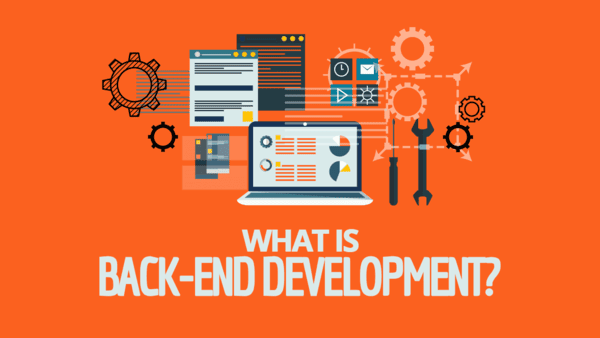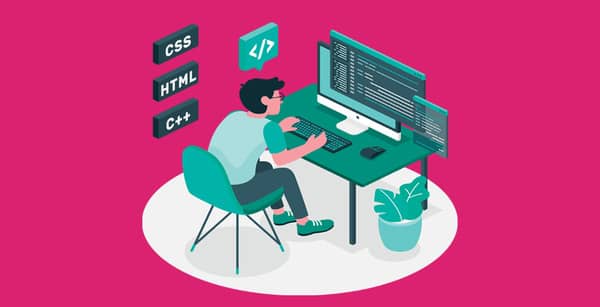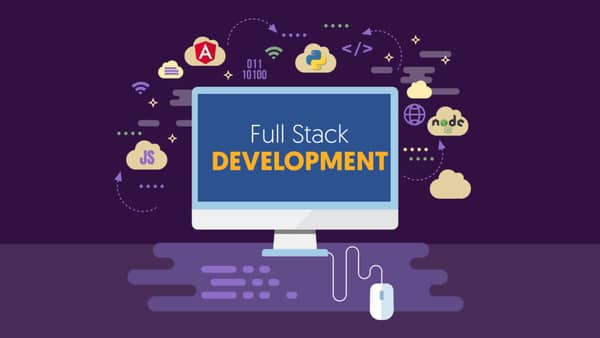
Technology News Recap
January 3, 2023
What Is Data Democratization?
January 18, 2023Web development refers to the building and maintaining a website or web application. It’s all the work done to make a website look good, load fast, and perform in a way that makes for a good user experience. Developing a website or web application includes many different aspects that can be broken down into two distinct categories: back-end and front-end development. We break down these differences and what full-stack development entails.
What Is the Difference Between a Website and a Web Application?
A web application is application software that is accessed through a web browser. Instead of running locally on a user’s operating system, web applications are delivered through the web to users with an active network connection. Some examples of web applications include email programs like Gmail and Yahoo Mail. It also includes YouTube and other streaming sites. Shopping carts, photo, and video editing platforms, online word processors, and spreadsheets are all web applications.

There is a difference between a website and a web application. A website is a group of internationally accessible and interlinked web pages with a single domain name. A web application is a program or software accessible from any browser. A website contains static content. A web application can read the content of a web application and manipulate the data.
There are various types of web applications including static web applications, dynamic web applications, E-Commerce web applications, single-page web applications, portal web applications, content management system web applications, animated web applications, and rich internet web applications. Users need different web applications depending on the company, business, or individual.

What Is the Back-End or Server-Side Code?
The back end is the application part that users cannot see. It’s all the aspects of a website or web application responsible for storing and organizing the data that users interact with. The back end is also the technology that is necessary to process the incoming requests, as well as, generate and send responses back to the user.
The back-end of a website consists of several significant aspects including the server, the application, and the database. The server can be thought of as the computer that receives the user’s request. Servers housed within a data center are optimized specifically for this purpose. Data center servers are some of the most powerful and have many additional benefits for website and web application use. With this being said, any computer connected to a network can act as a server for websites and applications, but it may not run as smoothly and efficiently.
The second aspect of the back end is the application, which runs on the server that waits and listens for a request. It then retrieves the information from the database and sends a response back to the user. The application allows communication between the user, the website, and the database.
The last part of the back end is the database itself, which holds and organizes data used for all tasks. The database is how data is saved while reducing the load CPU server’s main memory. Having a database can also make retrieving data easier if the server crashes or loses power.

What Is the Front-End?
The front-end of a website is what human and digital users interact with directly. The front end is what you see when you type in a website like “colocationamerica.com.” Most websites have many different aspects that make them unique and distinct. The overall style of how a website look includes text, images, buttons, layouts, and more.
Developing the front end also involves creating new web pages and updating existing ones, making HTML emails for email campaigns, checking to ensure web pages also work on smartphones and other mobile devices, improving website performance by cleaning the coding, and adding accessibility features.
The front end can include various accessibility features like voice recognition, text-to-speech, simple user flows, and more. These accessibility features make certain websites simpler to use, which provides an improved user experience. Another aspect of the front end is the overall speed of a website. It’s reported that 40% of consumers will not wait more than three seconds before abandoning a website. The faster the website is, the better it’s chance of keeping users on its site.
The technologies used to develop the front end of a website include HTML, CSS, and JavaScript. HTML stands for Hypertext Markup Language, the standardized system and code used to build the structure of a web page and its content. CSS stands for Cascading Style Sheets, which is used to lay out and style web pages. CSS allows the developer to alter fonts, font colors, size, and spacing of content. It also allows the developer to add animations and decorative features. Lastly, JavaScript lets the developer update content, control multimedia aspects, and animate images.

What Is Full-Stack Development?
Full-stack refers to all required and used to develop an entire web page or application. It also refers to the various ways these systems are used including online, mobile devices, and software specific. Website development is a two-part job that includes developing the back and front end. There often is an overlapping between the two sides of website development.
Full-stack development includes working on both the back end or server side of web programming, and the front end or the user side as well. A full-stack developer will work to design and create what the users see on the front-end, and at the same time, design, develop, and fix issues with databases and everything on the software’s back end.
Businesses can benefit from using a full-stack developer and full-stack development for their websites. Full-stack development can improve team management. It can be difficult to manage a group of individual developers. Having a full-stack development team can make developing a strategy and process simpler. It can also make developing a new site faster and more cost-efficient. Lastly, it can also improve website support and maintenance. Having the back-end and front-end working together from the beginning can make a big difference in support and maintenance.
Many aspects go into building a website or a web application. Two separate teams typically handle the back-end and front-end portions of developing a website, but full-stack development has simplified how websites and web applications are developed.

